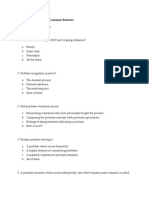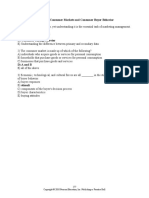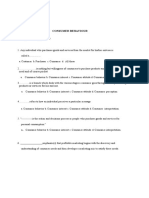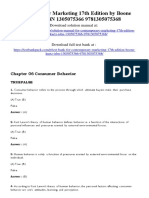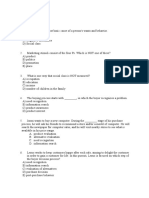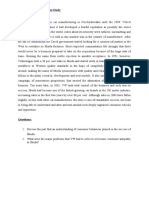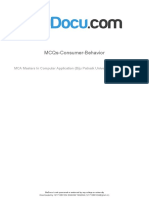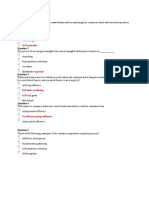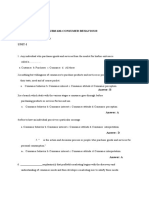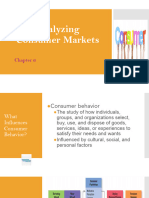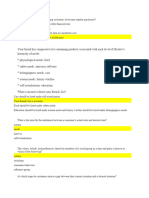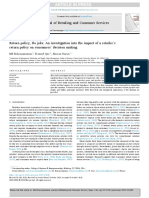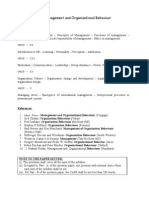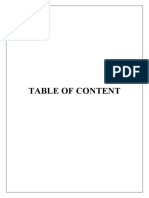Tutorial Questions
Topic 4 (Part 1) Understanding Consumer Behavior
TRUE/FALSE QUESTIONS
1) Social class is determined by a single factor, such as income, but is measured as a
combination of occupation, income, education, wealth, and other variables.
Answer: FALSE
2) Subcultures are groups of people with shared value systems based on common life
experiences and situations.
Answer: TRUE
3) Reference group influence on consumer buying behavior does not vary across products and
brands.
Answer: FALSE
4) Learning describes changes in an individual's behavior arising from experience.
Answer: TRUE
5) According to Maslow's theory, safety and social needs must be fulfilled after self-actualization
needs.
Answer: FALSE
6) A belief is a descriptive thought that a person holds about something. Beliefs may be based on
real knowledge, opinion, or faith and may or may not carry an emotional charge.
Answer: TRUE
7) Personal sources of information normally inform the buyer, but commercial sources legitimize
or evaluate products for the buyer.
Answer: FALSE
8) If marketers know what evaluative processes go on, they can take steps to influence the
buyer's decision.
Answer: TRUE
9) Adoption is the decision by an individual to try the product.
Answer: FALSE
TRUE
10) Interpersonal factors are a major influence on business buyer behavior.
Answer: TRUE
1
�MULTIPLE CHOICE QUESTIONS
1) Which of the following is a social factor that influences consumer buying behavior?
A) family
B) life-cycle stage
C) economic situation
D) personality
Answer: A
2) A shoe company's ads feature the members of a popular football team. Product sales increase
significantly among the team's fans. From the fans' viewpoint, the football team is a
________.
A) membership group
B) reference group
C) laggard
D) subculture
Answer: B
3) ________ are people within a reference group who, because of special skills, knowledge,
personality, or other characteristics, exert social influence on others.
A) Opinion leaders
B) Late mainstream adopters
C) Strangers
D) Lagging adopters
Answer: A
4) What is the most important consumer buying organization in society?
A) leading adopters
B) the family
C) membership groups
D) reference groups
Answer: B
5) Which of the following is a personal factor that influences a consumer's buying behavior?
A) life-cycle stage
B) motivation
C) status
D) family
Answer: A
6) A marketing firm has been assigned the task of watching trends in spending, personal income,
savings, and interest rates. The marketing firm is most likely gathering information about
consumers' ________.
A) social network usage rates
B) economic situations
C) occupational needs
D) purchasing perceptions
Answer: B
2
�7) Which of the following is a psychographic characteristic of a consumer?
A) gender
B) age
C) lifestyle
D) occupation
Answer: C
8) ________ refers to the unique psychological characteristics that distinguish a person or group.
A) Personality
B) Lifestyle
C) Status
D) Attitude
Answer: A
9) A baby boomer decides to purchase a BMW to impress others with her success. This
illustrates the importance of understanding the role of ________ in the marketing process.
A) personality
B) motive
C) attitude
D) learning
Answer: B
10) Which of the following needs in Maslow's hierarchy is generally satisfied last?
A) physiological
B) social
C) esteem
D) self-actualization
Answer: D
11) According to Maslow's hierarchy of needs, which of the following is most likely an esteem
need?
A) love
B) security
C) hunger
D) status
Answer: D
12) ________ is the process by which people select, organize, and interpret information to form
a meaningful picture of the world.
A) Retention
B) Motivation
C) Selective perception
D) Perception
Answer: D
3
�13) ________ means that consumers are likely to remember good points made about a brand
they favor and forget the good points made about competing brands.
A) Selective retention
B) Selective distortion
C) Selective attention
D) Subliminal perception
Answer: A
14) Which of the following is the first stage of the buyer decision process?
A) need recognition
B) information search
C) evaluation of alternatives
D) purchase decision
Answer: A
15) Bella wants to buy a new coat. She asks her friends to recommend a store and/or a style of
coat. She looks for sale advertisements for coats in newspapers and also visits nearby stores
to check if she can find a coat in her budget. In this case, Bella is most likely in the
________ stage of the buyer decision process.
A) product evaluation
B) evaluation of alternatives
C) need recognition
D) information search
Answer: D
16) The most effective sources of information about a product are ________.
A) commercial
B) public
C) experimental
D) personal
Answer: D
17) Devi is in the market for a new car. She is seriously considering either a Honda Civic or
Toyota Altis because they both have excellent quality and safety ratings and are comparable
in price. Devi is in the ________ stage of the buyer decision process.
A) evaluation of alternatives
B) need recognition
C) information search
D) purchase decision
Answer: A
4
�18) Jeff is in the process of buying a new car. He carefully analyzes the features that he wants in
a car, and perceives significant differences in price, quality, and features among three of his
favorite models. He rates the models on each factor and ranks them in the order of his
preference. To which of the following stages of the buyer decision process will Jeff most
likely proceed next?
A) evaluation of alternatives
B) information search
C) need recognition
D) purchase decision
Answer: D
19) ________ is a discomfort caused by post-purchase conflict.
A) Selective retention
B) Cognitive dissonance
C) Selective attention
D) Restraint bias
Answer: B
20) Billy thought he had received the best deal on his motorcycle. Shortly after the purchase,
Billy started to notice certain disadvantages of his new rides as he learned more about other
motorcycles available in the same price range. Billy is in which of the following stages of
the buyer decision process?
A) purchase decision
B) need recognition
C) post-purchase behavior
D) information search
Answer: C






